What does it take to run a successfully NPS journey towards customer excellence?
How do we move from NPS (score obsession) to Customer Experience focus?
How do we use NPS to accelerate our journey towards becoming a Customer Experience driven company?
What do we need to build to have solid foundations to drive Customer Experience Excellence?
These are some of the questions I most frequently hear from my clients and within the CEXP community. In this post, I share with you the path I followed to find the answers and build a systematic framework that keeps evolving continuously, as new learning and opportunities arise.
Starting from the NPS System – in 2007
My team and I were first confronted with the above questions in 2007 when I was responsible for the Philips Online Shop Consumer Care. Back then a lot of the focus was still on the Score. Satmetrix and Bain & Co. had introduced Net Promoter Score in 2004 and had just introduced the concept of Net Promoter System in 2007. Very few companies were already using NPS system, so together with my colleague Vincenzo Maggio, E-shop Marketing Manager, and Adam Dorrell, Founder of CustomerGauge (who designed the tool around our needs and requirements), we started creating our system:
- Survey set-up: lot of thoughts and effort went into deciding the NPS question – touchpoint recommendation versus brand recommendation – and identifying self-selected drivers for customers to indicate which areas should have our highest focus
- Reporting and analysis: we had four blocks to report on (NPS, self-selected drivers, free text comments and follow-up question) and to use for deep dive analysis to transform data into action
- Fire-fighting close loop: ensuring that each and every customer who gave a score below 6, or left a comment or indicated the need for follow-up, would receive a call within 48 hours and a solution to his issue within 72 hours
- Fire-Prevention or Structural Improvement: ensuring that all the comments left by customers could be clustered into specific projects to be prioritised (based on volume and expected impact on revenue and customer satisfaction) and addressed into given time frames
Our system worked very well, helping us not only to raise the E-Shop transactional NPS from negative to over 30% within 6 months, but also helping us to timely identify any issue impacting our operational excellence, and discovering hidden needs from our customers that we could be the first to address, ultimately allowing us to be customer-driven-growth business.
After I left Philips and started my consultancy practice, I added more elements to our primary NPS system, putting together my framework, which by beginning 2014 looked like this:
Initial NPS System framework in 2014
The Birth of the NPS Household © in 2014
By the end of 2014, after a year assisting my clients to embed NPS into their organization, especially in multinationals having to deploy NPS in more than 8 countries, I started to further work this model, incorporating all the new learnings, answers to my clients questions or challenges, and some of my key beliefs and guiding principles:
- NPS is just a metric, a tool to help you listen and act upon the Voice of the Customer and, as such, it is as good as what you make out of using it as system. The score is not the end goal. How well and how far you travel the journey is what it matters. NPS and the Voice of the Customer represent your compass during your Journey towards customer experience excellence, not the end destination.
- NPS makes a difference and takes you on a journey worth traveling when is used as a driver for change, rather than as mere metric. To use NPS as driver for change, you need the involvement of everyone in the company and a given set-up both towards the outside and within the organization. It needs fundaments, building blocks, pillars, roof and windows. It needs customers outside to engage with the company, and it needs employees inside to contribute to the delivery of a remarkable and excellent customer experience.
This is how the first “NPS Household ©” was born, effectively a house with an “Outside” face and an “Inside” and with a explicit focus on NPS.
The first Wow Now NPS Household (c) framework – 2014
The Outside part is what is visible to the customer, both in terms of “customer experience” (as the customer perception of the product and services delivered by the company) and in terms of “survey experience” (as ultimately also the survey becomes an interaction that will impact customer perception of the brand) and includes:
- NPS Survey: how the NPS survey is seen from the customers’ end from the invitation to the actual questionnaire; who receives it (sampling) and when (timing) after which triggers (i.e. relational, transactional); which questions to ask versus which data to import directly from the CRM tool (data feed), allowing you not only to ask fewer questions (= less burden on the customer and less survey fatigue), but also to be able to make more insightful analysis once you get the responses
- Reporting and Analysis: which reports and analysis are conducted from the survey responses and data feed used to gain insight and drive action; whether you share them externally with your customers and who has access to them internally
- Fire-fighting and issue resolution closed loop: if customers take the time to fill in a survey and also to write comments explaining in detail the what and why of their perception, and/or point out that their issue is not solved, any company serious about customer experience MUST do a one-on-one follow-up with that customer within 48 hours and, ideally, provide a satisfactory solution to the issue within 72 hours, or at least an apology and, eventually, a compensation if, for any reason, the issue cannot be solved in a different manner
- Fire-Prevention or Structural Improvement: I live by the rule “if you are not going to act upon it, don’t ask.” The most crucial part of using the NPS methodology successfully, is ensuring that all the comments left by customers are clustered into specific drivers, that key root causes and actions to address them are identified and grouped into projects to be prioritized (based on volume and expected impact on revenue and customer satisfaction) and addressed within given timeframes, some short and some long term
- Closed loop communication: once all this work is done, there is nothing more compelling and engaging than informing the customers about the insight gained thanks to their feedback (remember, they are giving you their most valuable asset for free: time!), the actions taken as consequence and the improvements they can expect within which time-frame. This communication can be done either publically and to everyone on the website (Virgin “We Hear you” campaign in 2014 or Higher Logic “You shared with us, we listened” are examples of best practices here) or nearly in a personalized manner, segmenting your survey respondents on the basis of the self-selected drivers or of their comments clustered on topic. This is what we regularly did at Philips E-Shop with very positive responses
- Topping everything with overall customer engagement management: by the time all the other building blocks are in place, you have insight on what your customers need and desire, know whether they are detractors or promoters, and have all the elements to let your creativity run free to think about how to engage and activate promoters and how to deliver WOW to all your customer.
The Inside part is what it takes within the organization to start and run a successful NPS program to collect and transform into action valuable feedback given by the customers on the product and services delivered:
- Having NPS owners and NPS champions in each business unit, function and/or country and, if an international company, an NPS community to coordinate action, communication and best practices sharing
- Selecting and implementing the right NPS tool with the needed integrations to the CRM tool
- Linking NPS to operational and financial metrics:to operational metrics to become able to predict their impact on NPS and to financial metrics to be able to understand ROI and results of your actions. NPS is ultimately a lagged indicator of your business operation while a forward-looking indicator of growth
- Fire-fighting by setting-up a workflow team and management system system to ensure every customer that requires follow-up receives it within 48 hours from employees which are empowered to make the needed actions. The fire-fighting system should include guidelines about which customers will receive which follow-up by who and when. The best practice here is that management is also directly involved in making 1 to 5 calls a month to customers who stand out (i.e. because of a strong detractor with a 0 score or a significant comment). During my time at Philips, I used to regularly monitor our fire-fighting workflow and the actions taken by our front-line agents. I would usually pick a sample of customers to call to thank for providing their feedback and asking whether the additional resolution provided had been satisfactory. I also had cases where I could read notes from my colleagues where I wasn’t happy with the resolution offered. I would take that as opportunity to coach the team on what they could/should have offered instead. I would call the customer directly, explaining my role and that I was going through our follow-up quality monitoring process, when I came across his case and saw the resolution offered didn’t met our intended customer experience I always got a “WOW” reaction from the customers and 3 times:
- WOW because the E-Shop Consumer Care Manager was calling
- WOW because not only we followed-up to a survey once, but we were taking the time to monitor quality of these follow-ups
- WOW because I was offering a proper alternative solution or compensation for the inconvenience caused
- Fire-preventing by creating a process improvement engine tto ensure gained insight is regularly transformed into actions that generate structural improvements and hence bring actual results short term and long term
- Designing and executing closed loop communication to have all the building blocks in place you need everyone to contribute and to understand how they can help, how everything they do also impact the ultimate customer experience.
The NPS household is the ultimate evidence that customer experience management is a reflection of employee experience management. They are two sides of the same coin or the exterior & interior of the same house.
The evolution of the NPS Household to CEXP Household © – our 2016 framework
Using this model over the past three years, I noticed it has made things tangible enough for all the people involved, breaking the creation of a systematic approach into achievable building blocks for each of which we could identify a horizontal “competency owner”. It also sparked many conversations resulting in several model upgrades, such as:
- The (visual) addition of the critical bedrock and fundaments every house requires:
- Company Culture, Strategy and Organization which reflects externally through the Vision and Brand Values
- Employees and (target) Customers
- The (visual) addition of a second layer about “Customer Experience Perception” on the Outside and “Product, Services and Experience Delivered” on the Inside, to reflect that fact that these change as result of the fire-fighting and fire-prevention activities
- The overlay addition of 7 Customer Experience Competencies that every company aiming at becoming customer-driven needs to master and that are part of our “NPS to CEXP Maturity Assessment Framework”:
- Align
- Listen and Measure
- Understand
- Act & Fix
- Improve & Prevent
- Communicate & Govern
- Deliver WOW, Engage & Activate
- The from NPS Household © to a wider CEXP Household © of which the NPS Household is a specification. In fact, the critical element of the “Listen and Measure” competency can be any VOC (Voice of Customer) Programs. NPS surveys are only one of them, and NPS is best complimented with the other ones in a wider and comprehensive VOC insight. Some of the key other VOC sources available are:
- Unsolicited feedback:
- Contact Center: this is possibly the most untapped source of insight companies have (and ignore having). As Business Improvement Manager at Adobe contact center (back in 2005!) all 25 improvement projects run in 3 years were always driven by a combination of insight gained from CSAT survey data & comments analysis, talking to the agents & listening to their calls, analysis of contact reason codes. WOCAS (What Our Customer Are Saying) are Amazon best practice on this one
- Social Media Listening: also here there is a remarkable quantity of sharing going on within and without the company social media channels. How much listening and following up are you doing here?
- Rating and Review
- Experiential feedback: this is one of my personal favorites. No matter how many survey responses I see or calls I listen to, I always go through the experience myself to live it first hand as customer. I used to do it regularly at Adobe and Philips, and I continue to do it for each client assignment I start. As consultant, in addition, I then either show the management what is like to have an experience as their customer (i.e. taking them through each step of my E-Shop purchase experience on their shop) or I let them go through the experience, as customer in the same way the customer would (rather than for example through a special employee portal)
- Unsolicited feedback:
Over the past two years this framework has evolved further into a complete:
- NPS & CEXP Household framework © (described here)
- 7 CEXP Competencies to be developed by every company wanting to become customer-driven (briefly listed above)
- NPS & CEXP Maturity Assessment model to assess the status of the 7 CEXP competencies and to map where you are in the CEXP journey and how/by when you can get to the next stage (we will cover this in an upcoming post)
If you would like to know more to see if/how this could apply to your NPS & CEXP journey, get in touch. You can also download our free NPS & CEXP Toolkit here.
Your view and feedback
Now I I’m curious to hear from you. Does this framework resonate with you and your NPS/CEXP work? Which framework do you use to run a successful and enjoyable customer experience journey with your colleagues and customers?






 A (little Italian) sunshine of energy, enthusiasm, and passion, with a mission to bring more happiness in the world one interaction at the time, the business world being my chosen playground!
I inspire and empower conscious leaders to nurture their happiness (moving from depleting to enriching emotions) and to move from depleting to enriching experiences, choosing, designing, and delivering WOW life-enriching interactions that contribute to everyone’s HAPPINESS, so they can achieve business and personal prosperity, making happiness their competitive advantage
A (little Italian) sunshine of energy, enthusiasm, and passion, with a mission to bring more happiness in the world one interaction at the time, the business world being my chosen playground!
I inspire and empower conscious leaders to nurture their happiness (moving from depleting to enriching emotions) and to move from depleting to enriching experiences, choosing, designing, and delivering WOW life-enriching interactions that contribute to everyone’s HAPPINESS, so they can achieve business and personal prosperity, making happiness their competitive advantage 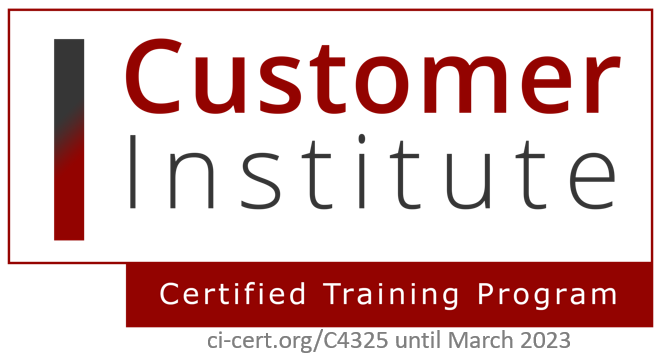

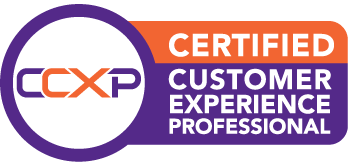
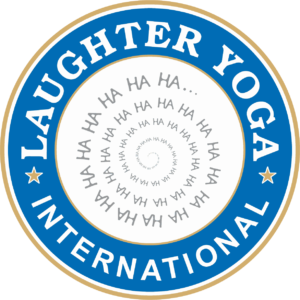




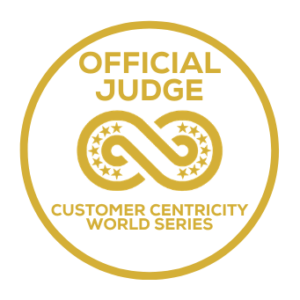
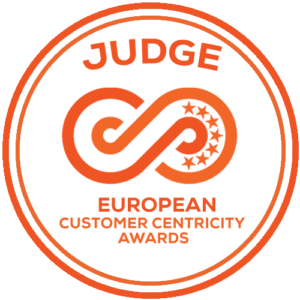
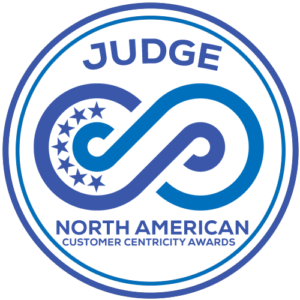
Trackbacks/Pingbacks